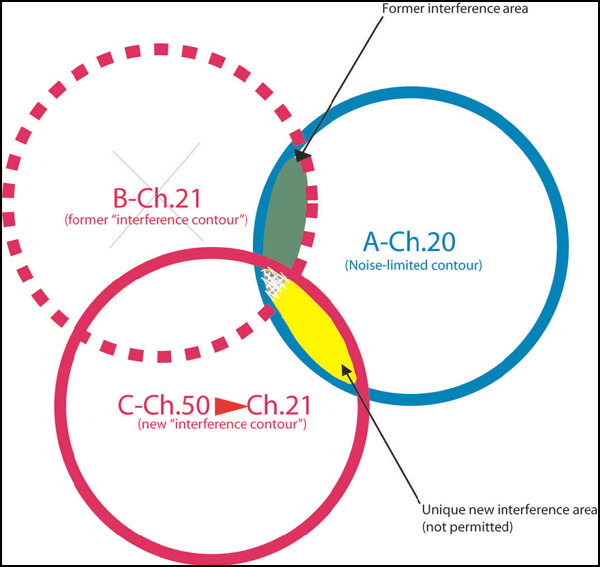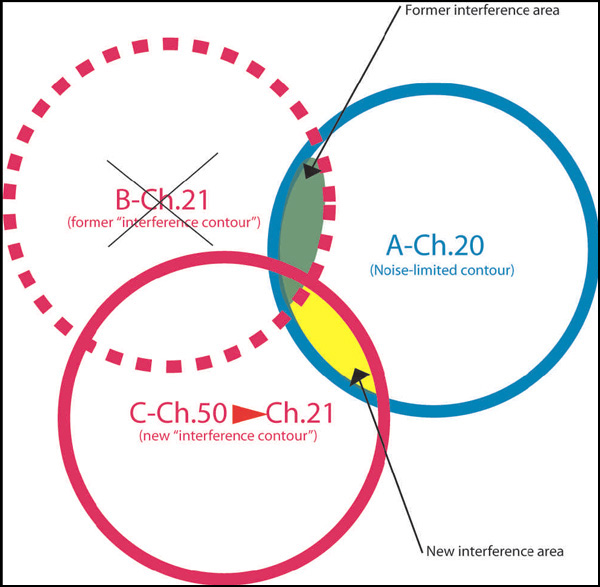FCC’s Ambitious Auction Plan
WASHINGTON— Regulatory optimists expect that the FCC’s spectrum incentive auction plan, unveiled at the end of last month, will move quickly and that some broadcast channels will begin reassignment to wireless and mobile service providers by spring or summer 2014. The commission, in its 5-0 approval of a Notice of Proposed Rulemaking (NPRM) indicated that it wants to approve the plan by early next year. The aggressive schedule is being pushed by the anticipated $25 billion auction bonanza, of which $1.75 billion will go to broadcasters who relinquish their airwaves.
Regulatory realists, however, question if the massive plan can move so quickly—especially with its complex simultaneous reverseand forward-auction structures and the fierce lobbying expected from broadcasting and telecom interests. The title of FCC’s official 205-page NPRM document, “Expanding the Economic and Innovation Opportunities of Spectrum Through Incentive Auctions,” bluntly states the objective of the plan: expansion of wireless broadband services. The term “broadcast” is mentioned only briefly in the first five paragraphs of the FCC’s announcement, with two of the references using the identical wording: “to repurpose broadcast television spectrum for mobile broadband.”
Accompanying the second reference, the FCC said it “expects a healthy and vibrant broadcasting industry to thrive after the auction, with expanded business opportunities for multi-platform growth in a more robust mobile ecosystem.”
To meet its expedited schedule, the FCC has set a Dec. 21 deadline for initial comments, with reply comments due by Feb. 19, 2013. The timetable is being encouraged because most of the funds will go to tax relief and unemployment benefits under terms of the Congressional law, adopted in February. That law included the “Spectrum Act,” which was based on the FCC’s 2009 National Broadband Plan.
THREE STEP PROCESS
The FCC’s complex auction proposal involves a three-step process:
• A “reverse auction” in which broadcast TV licensees submit bids to abandon their spectrum usage rights in exchange for payments that the FCC will establish;
• “Repacking” (reorganization of TV channel frequency assignments) in each market to free part of the UHF band for other uses, mainly in contiguous spectrum segments, and
• A “forward auction”—presumably among wireless carriers such as Verizon, AT&T and possibly new entrants—for use of the newly available frequencies.
Fig. 1: Illustration of “fixed” interference option
Get the TV Tech Newsletter
The professional video industry's #1 source for news, trends and product and tech information. Sign up below.

The entire process involves countless variables, and the FCC acknowledges that it is seeking guidelines on how to conduct the reverse auction, which may include options such as one-time sealed bids or a “multiround bid collection format.” Broadcasters who opt to participate in the auction would be committed to selling, even if the eventual financial offer does not meet their expectations.
The FCC insists that the process will meet “Congress’s mandate to make ‘all reasonable efforts’ to preserve the ‘coverage area and population served’ of television stations.”
The incentive auction Notice covers a wide range of operational issues that would affect broadcasters and multichannel video programming distributors after the auction, including:
• The process for “Channel Sharing Stations”: The commission would issue a new license to each sharing station, designating the shared channel as the operating frequency for each station;
• Interference and power: As part of the guard band examination, the FCC seeks information about interference with Lower 700 MHz operations, adjacent DTV operations and other ongoing services
• Payments via the “TV Broadcaster Relocation Fund: The FCC will “reimburse costs reasonably incurred by broadcast television licensees that are reassigned to new channels, as well as MVPDs that incur costs in order to carry the signals of such reassigned licensees.”
• Border issues: The FCC acknowledges potential problems with Canadian and Mexican TV channel coordination.
REACTIONS & DETAILS
The FCC’s long-anticipated NPRM triggered a predictable wave of polite, politically correct “commendations” and several cautionary admonitions.
Steven K. Berry, president/CEO of the Competitive Carriers Association (representing smaller telcos) wondered how the FCC can meet its 2014 target with such a plan.

Fig.2: Illustration of “flexible” interference option “If they hold both the reverse auction and the forward auction at the same time, I’m just not sure how it can be done,” he said.
Blair Levin, who headed the FCC’s National Broadband Plan task force and is now a Senior Fellow at the Aspen Institute, told TV Technology that he expects the proposal “will fare well.”
“Circumstances might change in terms of the relative value for a broadcaster in selling or keeping,” Levin said. “While I feel confident that some broadcasters will sell at a price buyers are willing to pay, it is difficult to know for how many that will be true.”
National Association of Broadcasters President/CEO Gordon Smith said that “NAB is committed to working with the FCC and Congress to ensure the auctions are successful and that broadcasters who choose to stay in business are not harmed by shrinking the TV band.” He believes that “the vast majority of TV stations will choose to remain in business.”
Steve Largent, president/CEO of CTIAThe Wireless Association, called the FCC action “an important step toward alleviating the looming spectrum crisis.” He emphasized the need to complete the process “in a timely manner.”
Among the groups cautioning the FCC to move slowly are ethnic organizations, voicing concern that the smaller, special-interest TV channels in markets may be the most likely to sell their spectrum. A few days before the FCC unveiled its plan, the Congressional Black Caucus, Congressional Hispanic Caucus and Congressional Asian Pacific American Caucus sent a letter the FCC lamenting that minorities would be unduly affected the auction plan.
CONSUMER EDUCATION AND MVPD RELATIONSHIPS
The FCC cited experiences of the fullpower DTV transition in June 2009 and the LPTV digital transition in December 2011, noting that it does “not anticipate that this transition will involve the same level of complexity, or require the same amount of consumer education.”
“Nevertheless, we believe that some consumer education may be appropriate to ensure an orderly transition and minimize disruptions,” the commission added, suggesting, for example, that viewers should be “encouraged to rescan their receivers for the new channel assignments, and educated on steps to take to resolve potential reception issues.”
In its lengthy section on “Post-Auction Issues,” the NPRM acknowledges that “some stations receiving new channel assignments may wish to change their channels.” The commission assures that it will set up a process “for stations to request a substitute channel by filing an application to modify their construction permits.”
The NPRM’s repacking discussion begins with a caveat that the Spectrum Act does not define “coverage area” and “population served”—leaving open a variety of concerns such as a broadcast station’s noise-limited contour and interference pattern.
It notes that the auction and repacking process “could impact both the coverage area and the population served of television stations… These varying propagation characteristics also mean that a new channel assignment may change the areas within a station’s noise-limited service area.”
The NPRM includes several illustrations about the impact of such changes (Figs. 1&2).
FCC Launches ‘Broadcaster LEARN’ Program on Incentive Auctions
WASHINGTON—The FCC has launched a “Broadcaster Learn Everything About Reverse- Auctions Now” program designed to offer broadcasters valuable information about the financial opportunities of incentive auctions, and to engage the broadcaster community throughout the entire incentive auction planning, design and execution processes.
“Incentive auctions are a win for broadcasters,” FCC Chairman Julius Genachowski said in the statement announcing the program. “Both those that will take advantage of a once-in-alifetime financial opportunity, and those that will choose to continue to be a part of an even healthier and diverse broadcast marketplace."
The first LEARN Program workshop is scheduled for Friday, Oct. 26. More details on this workshop will be announced soon, the FCC said. In addition, the commission has launched a new website, www.fcc.gov/LEARNprogram, which will serve as a central resource for a collection of auction-related material.
-- Deborah D. McAdams
Among the most complex sections of the NPRM—and the ones most likely to generate heated debate—are specifics about segments of the spectrum now in play. For example, the commission wants input about its 600 MHz band plan, which is reclaimed broadcast TV spectrum to be allotted using 5 MHz blocks. The FCC proposes to establish 6 MHz guard bands between mobile broadband and broadcast use and proposes to make this spectrum available for unlicensed use.
A more contentious debate is likely to emerge over what the FCC calls “a substantial amount of spectrum available for unlicensed uses, including a significant portion that would be available on a uniform nationwide basis for the first time.” It points out that TV “white spaces will continue to be available for unlicensed use in the repacked television band.”
WHO WILL SELL?
The initial reverse auction is based on the concept that the FCC will name a price that it will pay for airwaves, and then see how many broadcasters will sell.
Howard Liberman, a communications attorney at Drinker Biddle & Reath, does not expect network affiliates in major markets to participate in the incentive auction, “but fifth or sixth stations and [secondary] noncommercial stations” are more likely to take part.” He also foresees that “stations in ‘virtual duopoly’ situations in smaller markets” may also opt into the auction.
Gregg P. Skall, a partner at the law firm Womble Carlyle Sandridge & Rice, questioned the simultaneous auctions.
“It might have been more interesting to do the reverse first and determine what it is really going to produce,” said Skall, a former Chief Counsel at the National Telecommunications and Information Administration. He cited reports that most full-service television broadcasters “are not anxious to retire their stations or even to give up the DT2 and DT3 capabilities that have come along with the digital conversion.”
Deborah D. McAdams
Gary Arlen, a contributor to Broadcasting & Cable, NextTV and TV Tech, is known for his visionary insights into the convergence of media + telecom + content + technology. His perspectives on public/tech policy, marketing and audience measurement have added to the value of his research and analyses of emerging interactive and broadband services. Gary was founder/editor/publisher of Interactivity Report, TeleServices Report and other influential newsletters; he was the long-time “curmudgeon” columnist for Multichannel News as well as a regular contributor to AdMap, Washington Technology and Telecommunications Reports; Gary writes regularly about trends and media/marketing for the Consumer Technology Association's i3 magazine plus several blogs.

